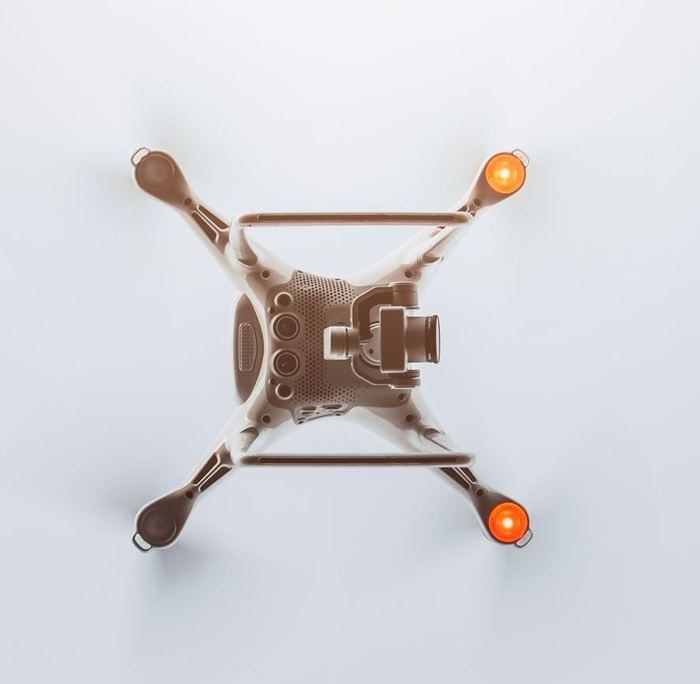Integrating Drone Technology into Your Business Is Easier Than You Think
The benefit that drones have for a multitude of different industries is overwhelmingly apparent to the technology-minded employees of a company, but negative connotations associated with terminology – and a lack of understanding from industrial decision makers – is holding back realisation of the full potential of this disruptive technology.
Ranging from search and rescue units, emergency services, inspections and surveying companies, and media and sport coverage outlets, unmanned aerial vehicles (UAVs) can benefit a number of industries, but more work needs to be done to normalise words used to describe unmanned systems in order to make the concept more universal.
“One of the biggest problems we’re facing at the moment is that the chief executive officers and managing directors of companies are not really understanding what drone technology is all about,” Lee Barfoot, business development manager for drone technology company, Consortiq, claims.
“We refer to them as drones, UAS, UAV and unmanned vehicles, so there is so much terminology that we are now at the stage where we are trying to determine how we get the bosses engaged to recognise the potential use and importance that drones operations can have on businesses.”
While those more familiar with the technology may well understand the advantages, they are often not the ones responsible for budgets and business decisions, so more has to be done to communicate with the high-ranking personnel that are.
“We can engage with the operators and people that see a need, but the CEOs of companies might not understand the benefits,” Barfoot says. “So, the terminology is important, we should be trying to simplify it and break it down.
“There are a lot of CEOs and senior management that if it weren’t for their subject matter experts within the businesses, would not know what we’re talking about. This is about using disruptive technology to enhance what these different businesses do.”
This is not applicable to just a handful of industries, but many different types of companies that are not necessarily au fait with aviation or disruptive technologies, but should they become aware could increase efficiency and cost savings by introducing unmanned systems.
There are negative connotations associated with drones, as the term has become stigmatised by the misuse of the technology by certain individuals not flying their drones safely or legally, as well as an association between drones and use by government departments such as the military.
“The negative stigma against it is not helping, and Consortiq wants more awareness of the uses and applications of drones, and what they might be able to do for a business,” Barfoot notes.
“Also, we have to promote this to make it commercial. Everybody knows about airlines and airliners, but it might be beneficial to create a ‘drone airline’ of sorts for a particular industry.”
Consortiq believes that if promoted and handled properly, this could be a game-changer for a number of companies worldwide.
“We are seeking a common language; what is normal within the drone industry isn’t necessarily understood outside of it, but the technology could really benefit these companies that do not yet realise the benefits.”
Consortiq is not claiming that drones are disruptive in that they will replace entire work forces of people, but instead can be used to bolster current operations in a safer and quicker manner.
“The reason why they are disruptive is because of the vast range of uses they have in different industries, but this needs to be understood and recognised,” Barfoot adds.
“For surveying, for example, why risk somebody being on the end of a rope when you can train a drone operator to do the same job quicker and more efficiently, safely and cost-effectively?”
He adds that it is about enhancing particular work forces to carry out current operations by training, educating and supporting the use of drones in order to increase safety and efficiency in particular.
It could replace other aircraft types, however. Helicopters that are currently used to support police operations but are often too in demand, costly, and not as quick to deploy as a drone is, could be replaced by a drone in certain scenarios. They also provide the same benefits to media companies that want a quick eye in the sky.
“The problems and the need to solve them across these industries is well defined, but there is a lack of understanding of the skill and technology available to solve that problem using a drone,” Barfoot adds. “They know the issue, but they don’t know how they can do it more efficiently.
“Drones can be used in many ways in a multitude of industries, and they will assist and not necessarily replace the workforce, making it safer, more cost-effective, and in most cases, much timelier.”
